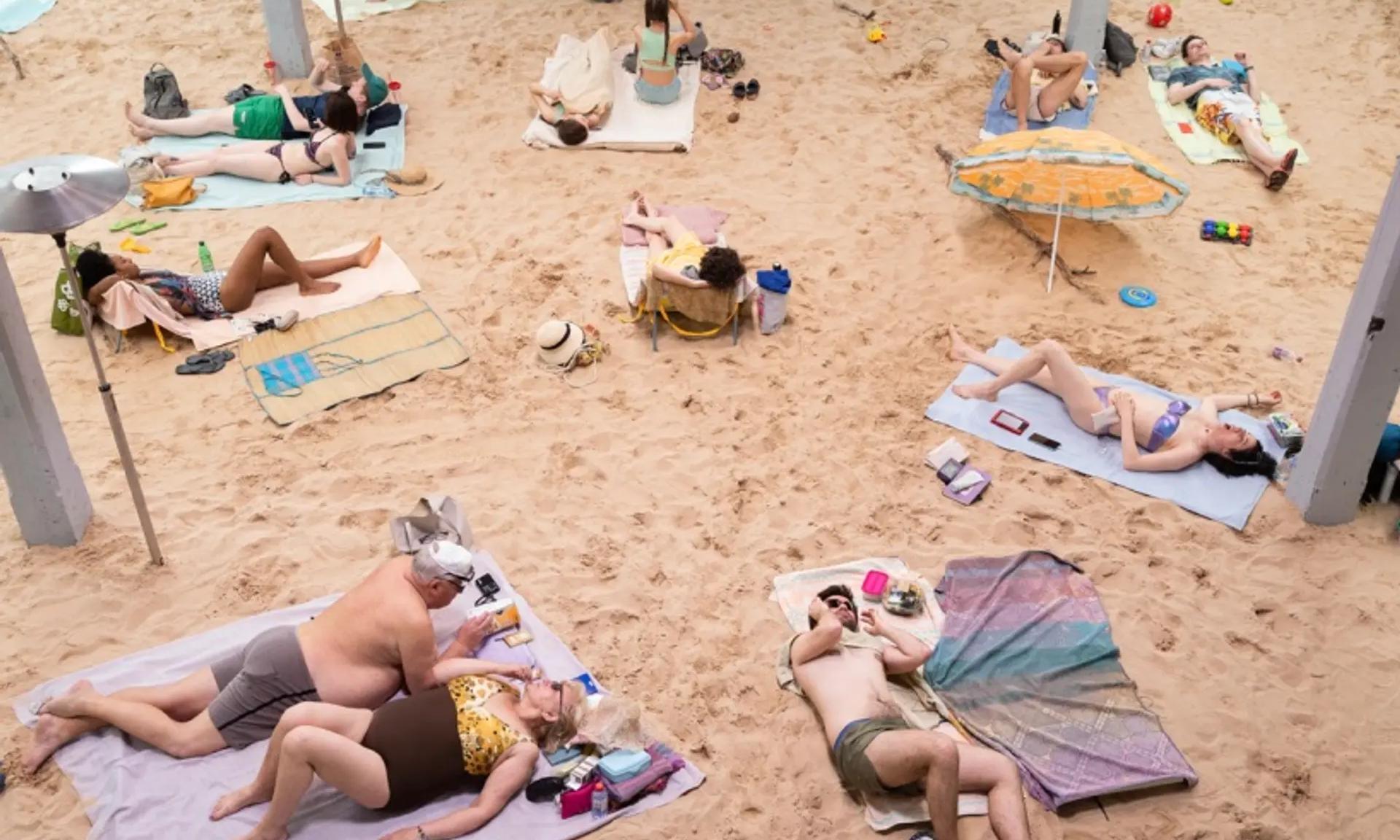The idea for the biennial was sparked by Lithuania receiving the Golden Lion for Sun & Sea (Marina) at the 58th International Art Exhibition – la Biennale di Venezia, 2019 © Andrej Vasilenko
Lithuania may be a small country, but it has big ambitions when it comes to the art world. The Baltic state wants to position itself as the capital of performance art with a new biennial. The first edition of the Vilnius Biennial of Performance Art will take place this summer, with the capital city staging up to 40 performances in public spaces from parks and squares to tennis courts and cultural venues.
An open call for performance artists elicited 300 applications worldwide, with ten being chosen by an international jury. Another eight—yet to be named—artists have been chosen by the curators. The brief is to create site-specific performances related to the theme of the city. “I decided to focus on the city as human construct,” says the artistic director Neringa Bumblienė, “a place where different histories, myths, activities, interests, desires and visions overlap, coexist and collide.”
Until Lithuania regained its independence from the Soviet Union in 1990, most contemporary art happened underground with no institutional backing. Arts and literature under communism served as a useful outlet for political dissent but they had to be inventive to avoid the attention of the censors. “We have a history of performance art going back to the 1970s,” says Lolita Jablonskiene, the director of the National Gallery of Art in Vilnius. “These were often illegal actions in public spaces only seen by maybe ten friends, but they documented them.” Once the Soviet yoke was lifted, an explosion of creativity followed, giving rise to a dynamic and experimental art scene.
The idea of holding a biennial devoted to performance art came about after Lithuania won the Golden Lion at Venice in 2019 with Sun & Sea (Marina), an operatic art installation set on an artificial beach. With the audience looking down from above, 25 performers in swimsuits lounged on chairs and towels while singing. Put together by three women artists, Rugilė Barzdžiukaitė, Vaiva Grainytė and Lina Lapelytė, the lyrics gently reflect on the pollution of our seas and the changing climate. The 60-minute performance, which ran on an eight-hour loop, attracted long, snaking queues around the Lithuanian pavilion and later embarked on a successful world tour.
Women artists reflecting on the plight of our oceans turns out to be a bit of a theme running through Lithuanian performance art. One of the country’s best-known artists and filmmakers is Emilija Škarnulytė, who learned to scuba and free dive while studying in the Norwegian city of Tromsø, in the Arctic circle. She started collaborating with marine biologists, making lakes, rivers and oceans a theme in her work. Most of her films involve the artist swimming in a mermaid costume and then filming herself in the water using drones. It’s about linking the real world to the classical, mythological one.
For the biennial's launch, Škarnulytė was given the run of the Lithuanian National Opera and Ballet Theatre, a striking Modernist building with a huge glass atrium. Using lights, lasers and large-format video projections with specially choreographed sound (including a live choir dressed in black hoods), she turned the entire building into a mesmerising underwater world with the chandeliers looking like huge jellyfish floating overhead. The video images were shot from a submarine 4km down in the very polluted Gulf of Mexico, capturing both sea life and man-made debris. CGI images of ruined buildings evoked a speculative future where rising water levels have submerged coastal cities.
The next day I meet the 36-year-old artist at the Radvila Palace Museum of Art in Vilnius, where she has another installation running throughout 2023. I lie in the dark next to her on a sun lounger, gazing up at images of Škarnulytė diving into the cold black waters around a disused Cold War submarine base in Norway. “That was super dangerous,” she says, chuckling as she watches herself. “I could have got hypothermia. Watching myself back, I’m scared. I could have done this in post-production but the location was important”. She sees her films as archaeological expeditions into the future, “to inaccessible places where there are no humans; only their artefacts remain”.
Škarnulytė’s next project involves filming in the Baltic Sea, one of the deadliest oceans in the world, full of Cold War debris and nuclear waste. “Here in the Baltics, geopolitics is always very present, particularly right now with the war in Ukraine, which is not far away,” she says. “In that way, I see myself a bit like a journalist or a documentary maker, making the invisible visible.”

